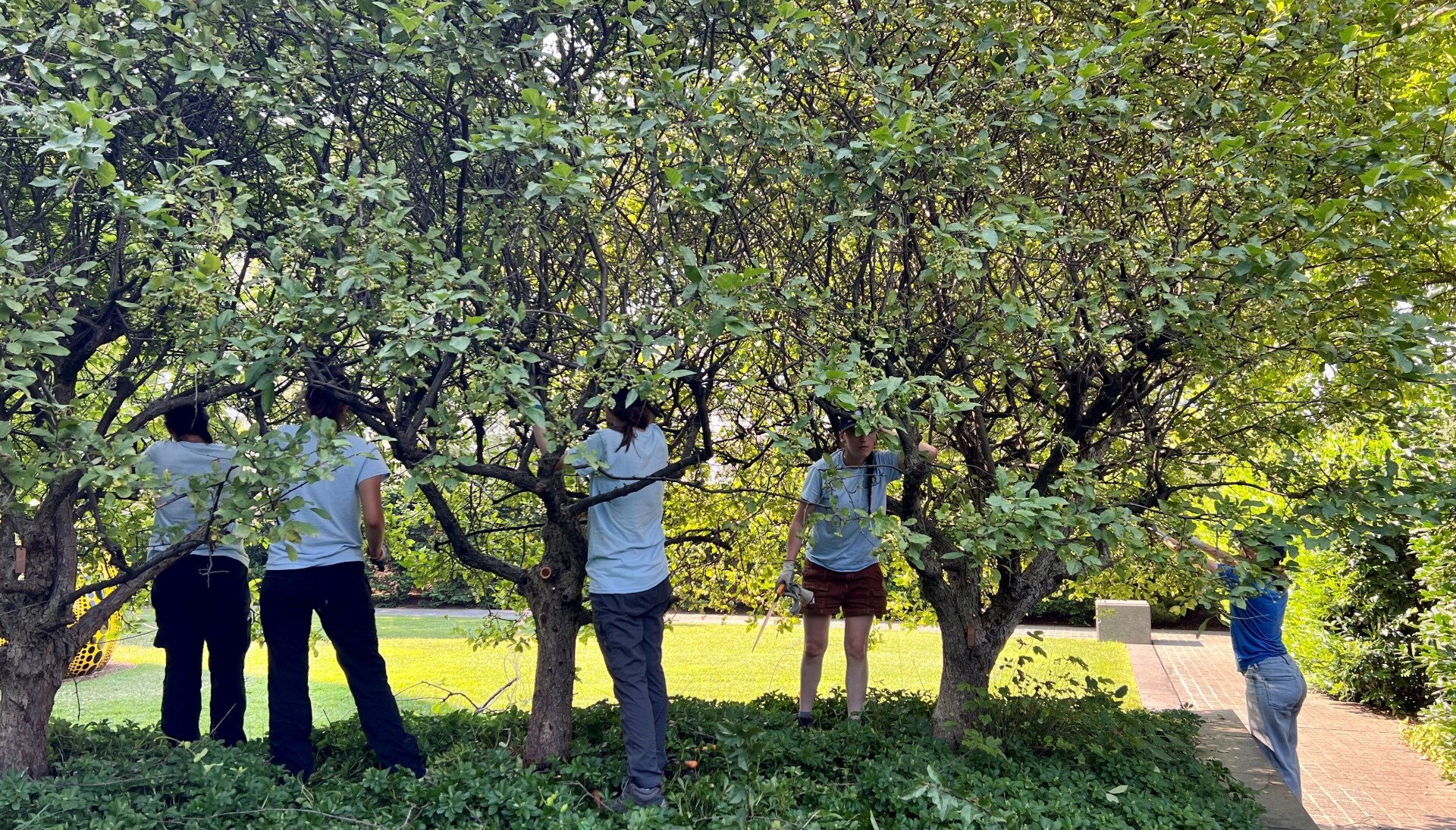It’s Time to Begin Your Winter Pruning!
This article is part one of a two-part series. Stay tuned for the February newsletter for part two!
With the holidays in the rear-view mirror, now is the time to start thinking about getting back outside into your garden. No, not just to shovel snow or refill the birdfeeders…but rather for some winter pruning! Ornamental shrubs and trees generally benefit from some occasional pruning, and from December to late March is the perfect time to prune most (but not all) of your shrubs and trees.
Why winter?!
There are several reasons why it’s best to prune during the winter:
1. The plants are dormant (i.e. above-ground growth is halted), so you won’t be removing any actively growing branches or leaves which could stress the plant.
2. You’re less likely to transmit diseases or enable insects or pests to enter the wound.
3. Pruning while the plant is dormant allows all new spring growth energy to go into the new desirable stems and leaves rather than waste precious energy on branches that would eventually be cut off anyway.
4. In a practical sense, it is much easier to see the branching structure of the plant when its leaves are not present.
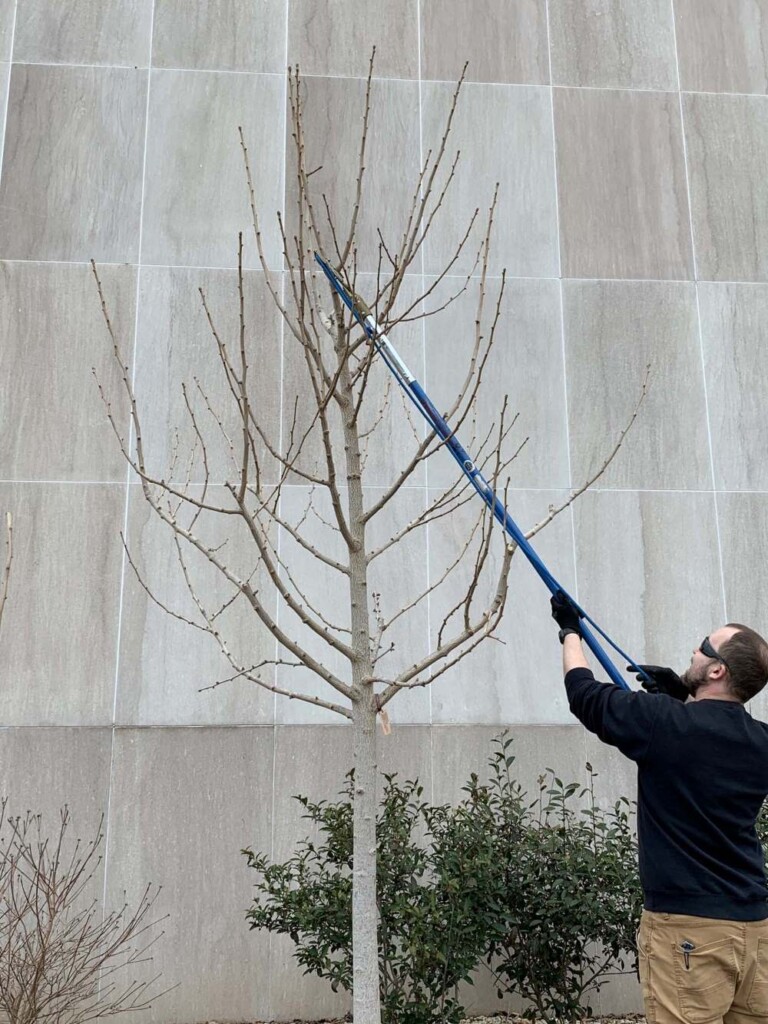
Why are you pruning that tree or shrub anyway?!
Before you begin, you should know which shrubs and trees you want to prune and have a clear purpose in mind for each. Do you want to enhance the shape of the plant, improve its structure, reduce its size, thin it out, promote more flowering, or completely rejuvenate it? Your pruning technique will vary based on your purpose.
When should you prune each plant?
Once you know which plants you want to prune and your purpose for each, it’s critical to know what plants can be pruned in the winter and which ones should wait. As a general rule of thumb, the vast majority of deciduous trees– those that lose all of their leaves for part of the year–can be pruned in winter (see more below), but shrubs get a little trickier. Shrubs that produce flowers on “new wood” (stem growth that occurs during spring and early summer) can be pruned in winter. Just a few examples of this include Clethra (summersweet), Callicarpa (beautyberry), Hydrangea paniculata, Hydrangea arborescens (smooth hydrangea), Abelia, butterfly bush (Buddleia), shrubby dogwoods (not the tree dogwoods!), Japanese spirea, and roses. Shrubs that bloom on “old wood” (growth from previous years) should be pruned just after flowering in the spring or early summer to allow time for the shrub to regrow and produce next year’s blooms. Examples include Itea (Virginia sweetspire), azaleas and rhododendrons, Forsythia, Hydrangea macrocarpa (big-leaf hydrangea), Hydrangea quercifolia (oak-leaf hydrangea), Wisteria, and Viburnums. Warning: don’t wait too long after flowering to prune plants that bloom on old wood or you could cut off next year’s developing blooms!
While most deciduous trees should be pruned in winter, ornamental trees that bloom in spring (such as dogwoods, redbuds, cherries, fruit trees, and magnolias) should wait until just after blooming so you don’t sacrifice their gorgeous flowers. (Heads up: Structural pruning of trees is a complex topic in and of itself, so before undertaking formal structural pruning on a tree, I recommend reading up on the proper techniques and/or calling a reputable tree service company that is up to date on structural pruning standards.)
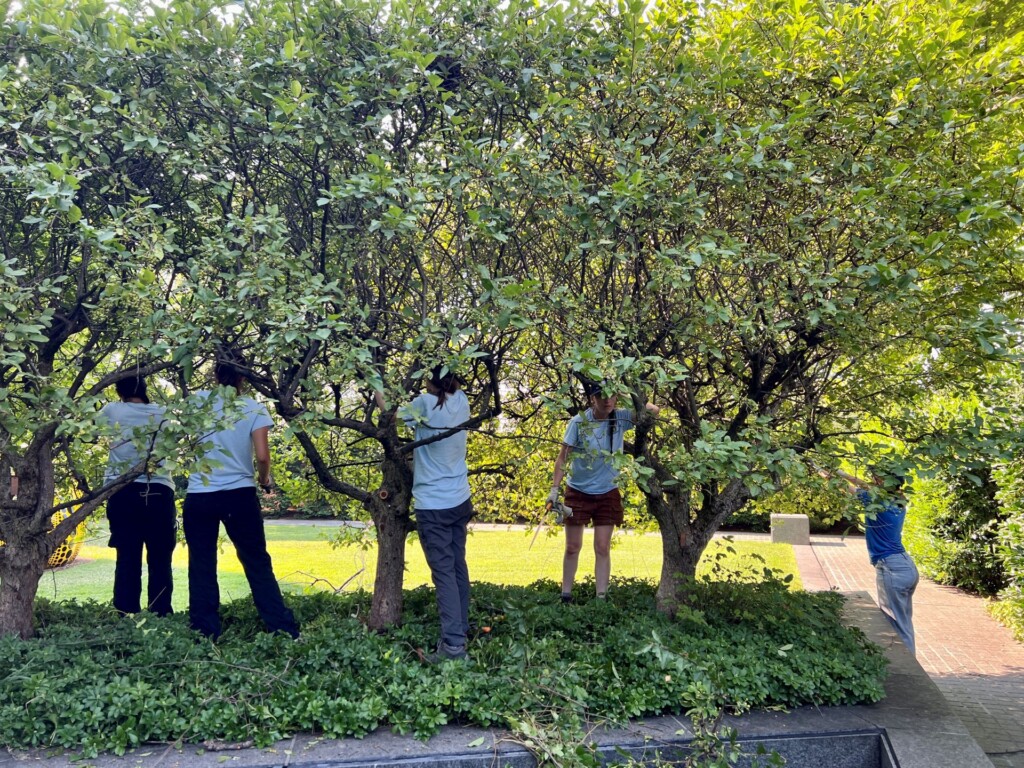
A caveat: Sometimes, in our overly busy lives (and even in the professional horticulture world), the best time to prune is when you have the time, even if it means sacrificing this year’s blooms. If pruning is ultimately for the benefit of the tree or shrub, it’s best to get the pruning job done when you can and move on. The plant will be ok!
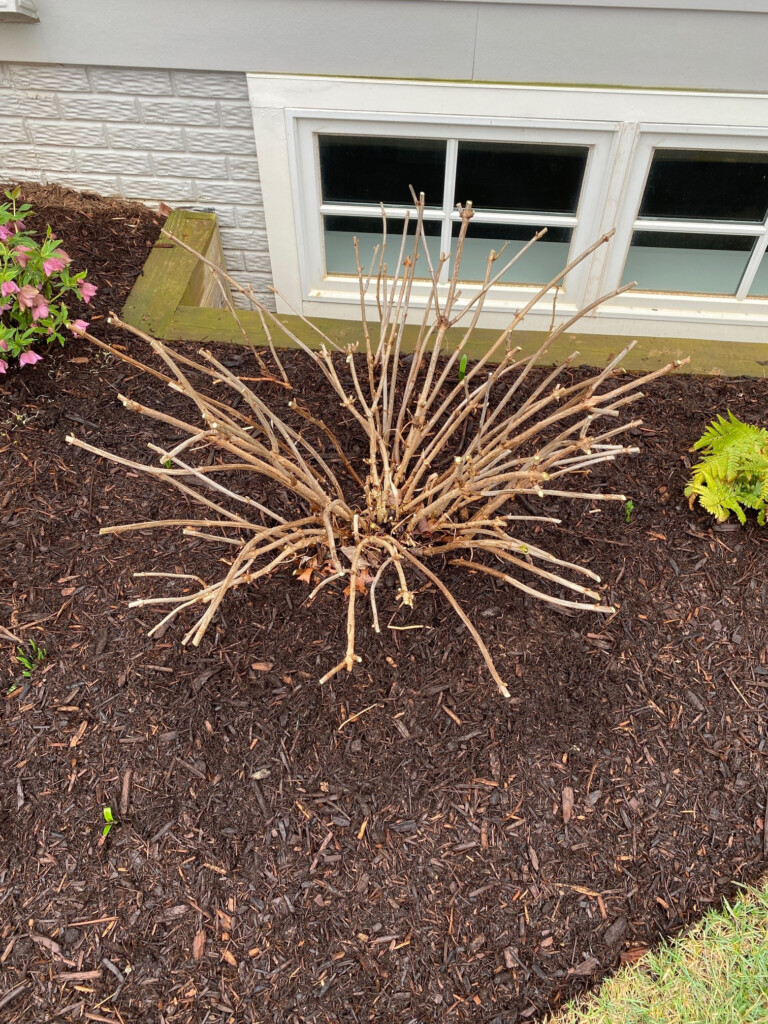
What about evergreens?!
Pruning evergreen shrubs and trees requires its own article! In general, though, it is safe to prune most of them in early spring, preferably just before new growth has started and all danger of frost is past. Since evergreens are not fully dormant in the winter, pruning them in the winter could lead to tip burn where precious water is lost from the cut point.
The Right Tool for the Job
What tools will you need? Pruners, loppers, a hand saw, and a pole saw if you have one will cut through most branches you want to remove. For anything bigger or higher, call a reputable tree care or landscaping maintenance company! Make sure your tools are sharp and clean, and disinfect them with a spritz of rubbing alcohol as you move from plant to plant to reduce the chance of spreading disease.
What am I supposed to cut?!
Finally, which branches should you remove? For that, you’ll need to wait until next month when I publish part two of this article! But in the meantime, if you are itching to get started, remove all dead, diseased, and damaged wood. This can actually be done any time of the year but should be step one in your winter pruning process. We’ll cover the rest of what to remove next month.
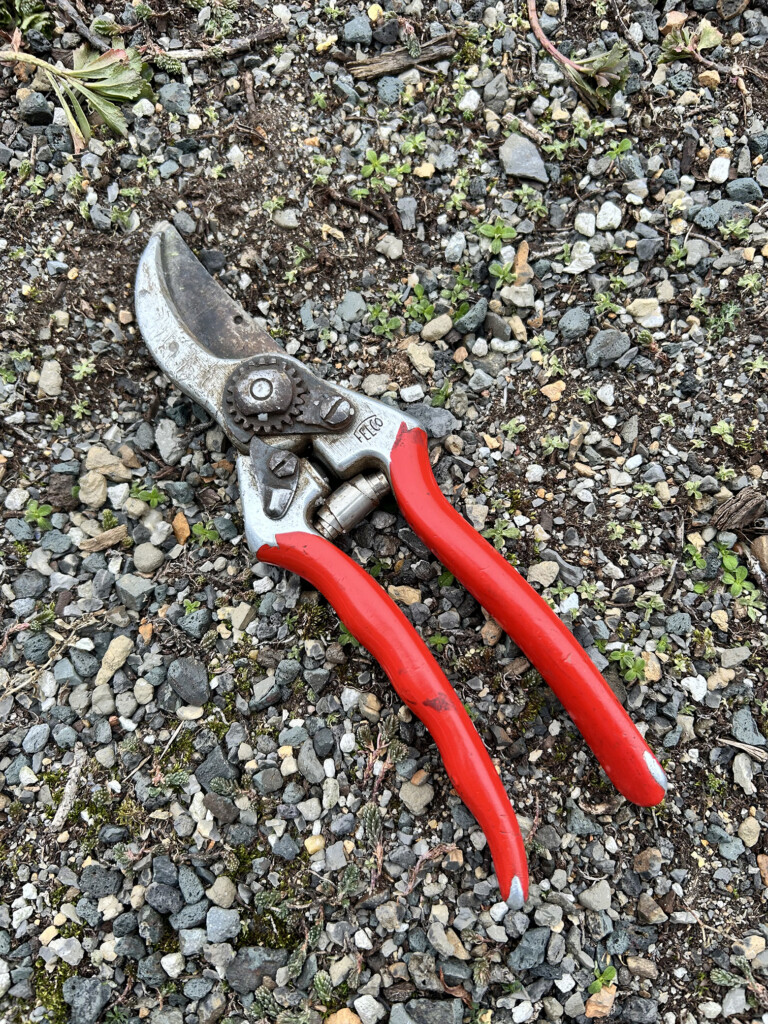

Invest in a good pair of pruners and loopers to help ensure good, clean cuts. This ensures the plant is able to heal over the cut without attracting pests or introducing diseases.
Your plant has a request for you!
One last note: Most trees and shrubs look their best and stay their healthiest when they are pruned to keep their natural shape and form. Ideally, this means no shearing into triangles or boxes or basketballs or dancing bears unless you have a specific aesthetic that calls for geometric-shaped plants or a hedge that must be sheared. And never “top” your trees or shrubs! Topping—where the entire top is lopped off–causes unnatural growth that affects the structural integrity of the tree and leaves large wounds that are difficult for the tree to seal, making them more susceptible to pests and disease. While this practice is commonly done to crape myrtles in the mid-Atlantic region, just because everyone’s doing it doesn’t make it right. THE GOAL: You’ll know that you pruned successfully if you barely notice that you pruned it at all! And your plant will thank you for highlighting its natural shape and beauty.
Next month I’ll go into more detail about specific pruning cuts to make and some techniques based on your expressed purpose. Until then, stay warm, and happy pruning!

